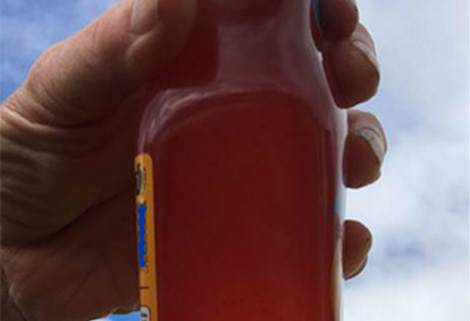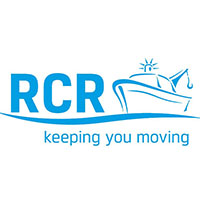sticky fuel
update from river canal rescue
Last summer, River Canal Rescue highlighted the problem of sticky fuel and how this was causing an uncharacteristic peak in fuel-related component breakdowns not linked to diesel bug.
Managing director, Stephanie Horton, comments: “We first became aware of the issue when we had two identical jobs where fuel injectors were diagnosed as needing an overhaul, yet their replacements stopped working within a week, and the injection pumps were found to have failed even though the diesel was clear and bright.
“Our engineers found in both cases, the injector pump racks had seized solid and the nozzles were blocked, and when replacing the plunger filter head, they found the fuel had a sticky, syrup-like substance. Alongside stuck injection pump racks, injectors and filter head plunger failures, we also had cases of fuel filters blocking with wax inside them.
“Initially we suspected sugar in the fuel, but sugar stays crystalline instead of dissolving. We’re now considering it may be related to a change in fuel and fuel treatment additives. This is not contamination in the traditional sense (all the samples sent away for analysis are clear); it’s only the smell of turps that alerts us to a problem.
“Following discussions with several leading fuel analysis companies, we’re now working with a university lab to use IR spectrum analysers and range of samples/treatments to see if we can identify what is causing sticky fuel.”
Stephanie concludes: “RCR is taking these steps as cases are increasing to two-three per week, and although there are some trends and patterns developing in the more cases we see, it’s important to have scientific evidence to back-up our theories. As an industry we must work together to find a solution.”

Here, two boaters share their experiences:
Unpleasant & expensive
Dear RCR,
Re the ‘sticky fuel issue’, we had a similar episode with our narrowboat nb ‘Many Meetings’ in August 2020.
Our narrowboat was launched in October 2011 and up to the incident had done 2,850 hours. We cruise in the summer and over winter, we’re at Aston Marina near Stone, Staffordshire.
In 2018, we did the Severn Estuary from Sharpness to Bristol and, in preparation for that, had the fuel polished in July. There was absolutely no water or contamination in the fuel.
In 2019, the boat was serviced by our engineer in the spring, and again filters and fuel were clean. We then went up to Lincoln and Boston via the Tidal Trent. We refuelled twice at Sawley Marina, twice at Burton Waters Marina and finally topped the tank off for the winter back at Aston Marina, when we arrived back there in October.
Due to the pandemic, the boat remained unused until 20 August 2020. Before taking the boat out, I checked the engine and fuel filter, and checked the fuel draining from the filter was clear, which it was. We over-nighted at Weston before continuing to Great Haywood on 21 August, and the engine (a Beta 43) ran fine.
On the morning of 22 August, the engine was reluctant to start and produced clouds of white smoke. Luckily, there was an Anglo Welsh hire base and their engineer said he would take a look at the boat the following morning, which he did.
The engineer checked the fuel and filters, which looked fine, and drained off some fuel, which was clear. He then removed an injector and tested it. He found the injector was blocked and so replaced all four injectors. The engine started and ran fine.
The following morning we set off, but only went a few miles south before stopping for the night. The engine ran fine.
The next morning, the engine wouldn't start. The brilliant engineer from Anglo Welsh came to find us on his day off and, after a couple of hours, he finally managed to get the engine started but it was running quite roughly. Gingerly, we made our way back to Great Haywood.
At Great Haywood, the engineer removed the injectors to check them and found they were welded shut. He put one in a vice and tried to pull the centre pin out with a pair of pliers, but it was completely jammed solid.
The fuel feed for the engine is above the bottom of the tank, so we removed the bottom drain and dumped the tank contents of 135 litres of fuel. We used the bottom drain and a powerful pump to rinse the tank and ensure that any contamination was washed out. We then put another 35 litres into the tank and dumped that to rinse the tank out.
Anglo Welsh very kindly disposed of the fuel for us. When we drained the tank, we took a sample from the very bottom of the tank, which did not look very healthy - although the rest of the fuel looked fine.
We replaced the four injectors again (those things are not cheap), drained all the fuel from the engine and filters, and ran the engine on clean fuel from a 5 gallon drum for an hour or so. We then put 100 litres of new fuel into the tank and ran it on that successfully. Subsequently, the engine started and ran fine. You can be sure that when (hopefully) some normality returns, I will take a fuel sample from the very bottom of the tank before we set out again.
It appears the contamination was settled at the bottom of the tank but the motion of the boat meant some of it got picked up into the engine. The engine ran fine and the injectors worked OK when the engine was hot, but it seems when the engine cooled down, whatever it was blocked the injectors.
Altogether an unpleasant experience and very expensive - dumping 170 litres of fuel and putting in eight new injectors. However, all credit to Anglo Welsh and their brilliant engineer.
Robin Sundt, Redhill, Surrey.
A bit of a pain
Re: contaminated fuel, I have experienced the same problem with my boat and it was a devil to get rid of and until I run it again, I have not proved it is gone. My boat is called Pyrus and is kept in the Grand Union at Blisworth, Northampton. It has a Greaves twin cylinder engine which is built in India and is a development of a Ruston Hornsby unit. Below are the chain of events I experienced:
1. August 2019. Having returned from a long trip through Shropshire, Wales and the North we returned to our mooring intending to have a rest for a few months from boating. In advance of mooring up, we filled up with diesel at Rugby Boats, near Weedon, and I added Fuel Set (as I have always done since owning the boat in 2012).
2. October 2019. We have a heritage cooker installed in the boat which runs on diesel and this packed up. On inspection, by draining the filter, the fuel came out looking like water, with a grey tinge. Not pink at all. I had not run the engine since August and did not at this time. I change the filters every year about April/May and they are always clear of any debris/water in the bowl.
The UK agent for Greaves is close to me and came down to help clear the problem. We syphoned a lot of fuel off to the point we thought it was clear and added two or three bottles of Marine 16 to treat it.
3. November 2019. The engine started and appeared to run OK. At this time the engineer visited to sort the cooker, but found contamination still present. It looked like frog spawn. Also by this time when trying to clean the fuel, the tank was below half-full.
4. January 2020. I got Tankbusters to polish the fuel. Took about 4 hours after which the fuel looked to be the correct pink colour and again more Marine 16 was added (the tank was also topped up at Blisworth marina). The cooker was sorted and that and the engine seemed to be working OK, following a test trip up the canal for a day. Shortly afterwards lock down was imposed which put a stop to any further use.
5. July 2020. I took the boat out for the weekend. At the end of the first day the engine was running a little lumpy. The next day only one cylinder was working and I struggled to get back onto my mooring. The injectors were seized so I took them to be rebuilt.
6. August 2020. Injectors back in boat - took it out for a 6 hour test. This started very well but as I was returning it started to run lumpy again. The following day I found the injector pump racks were seized and I assumed the injectors would be affected (which proved the case when I took them in to be fixed). I used diesel specialist, Colchester Fuel Injection, and I gave them a sample of diesel to test. The results were about 4% bio which is within limits.
7. September 2020. Injectors and pumps back in engine but not started. I pulled the boat to a local boat yard and had all the fuel removed and the tank cleaned out. Pulled the boat back onto the mooring where it was filled with fuel from fuel boat, Jules fuel. No additive was put in and I do not intend to use any. The cooker works, but I want to test the engine over a day trip as recommended by Colchester Fuel Injection rather than a short quick run.
All in all a bit of a pain. My engine is rather agricultural and simple and it is the first issue I have had with it ever. I thought it would run on water. Obviously not and this fuel has been a real issue. Hopefully I am over it now.
Chris Browne, Chelmsford, Essex.

